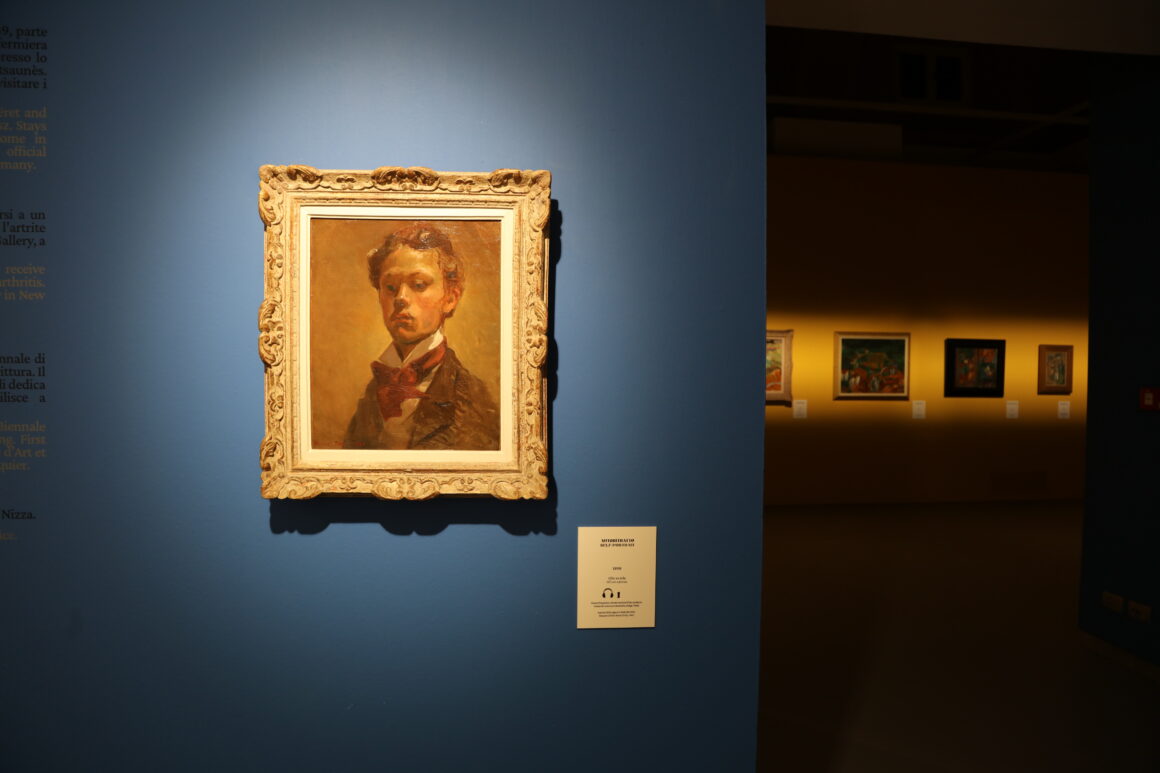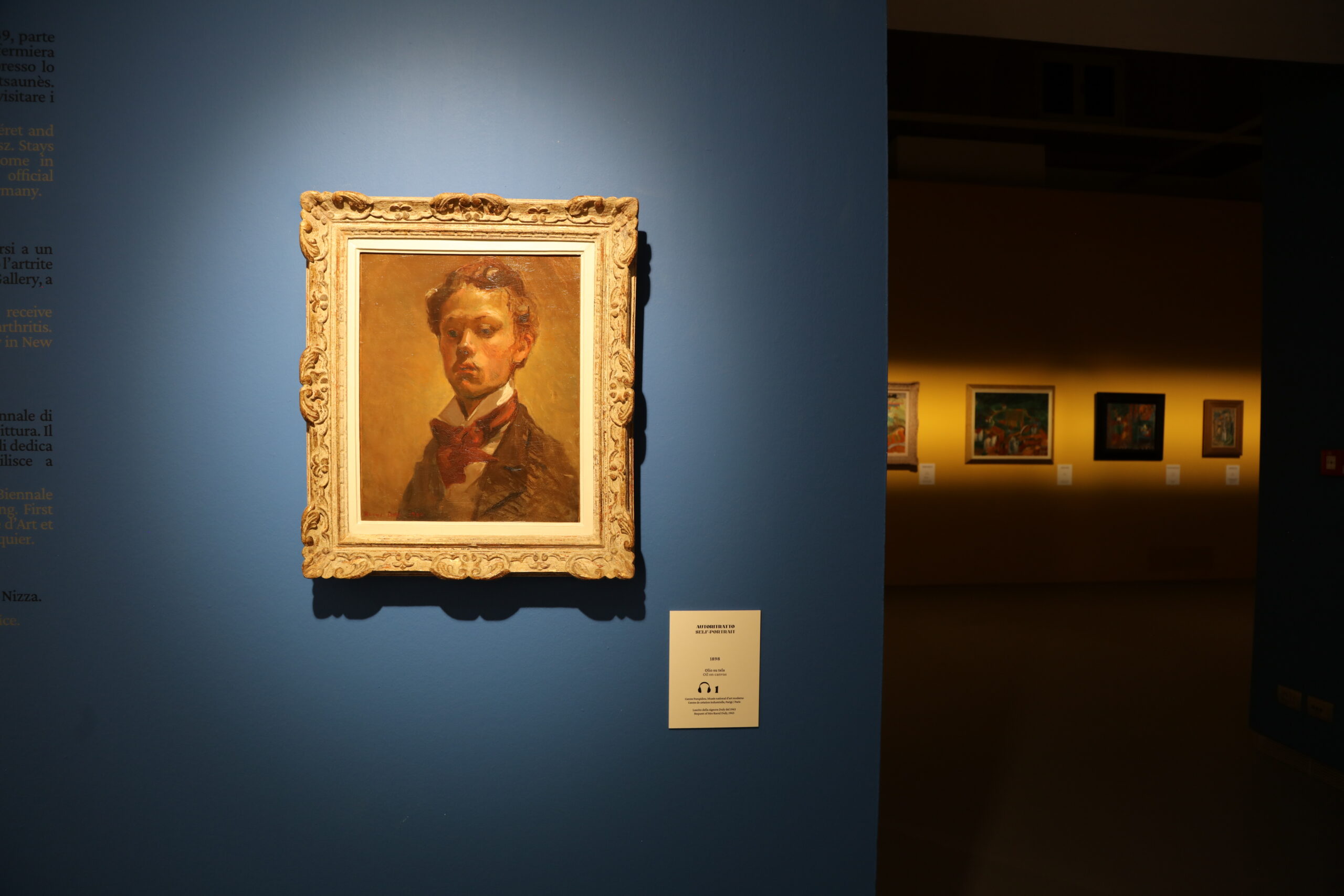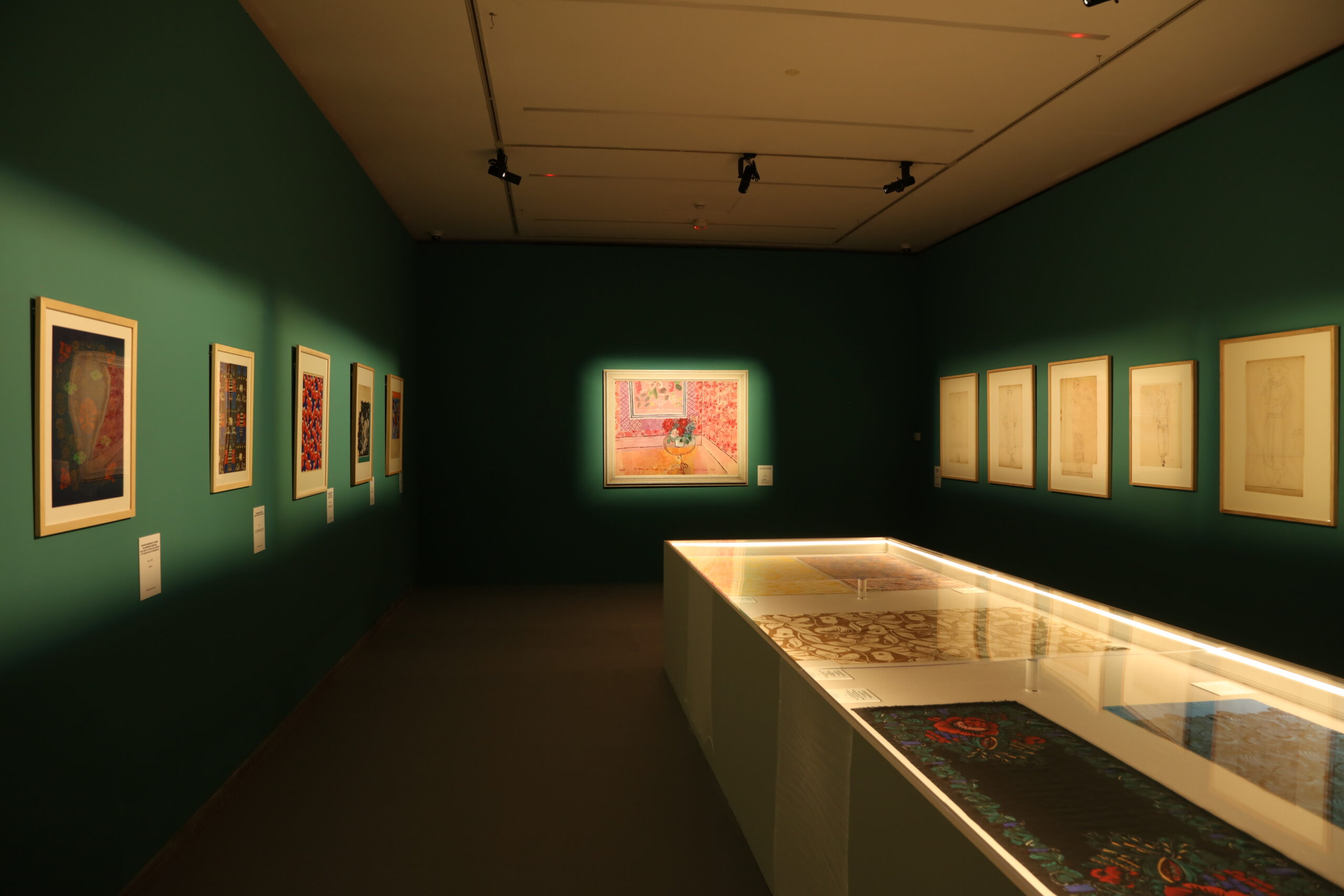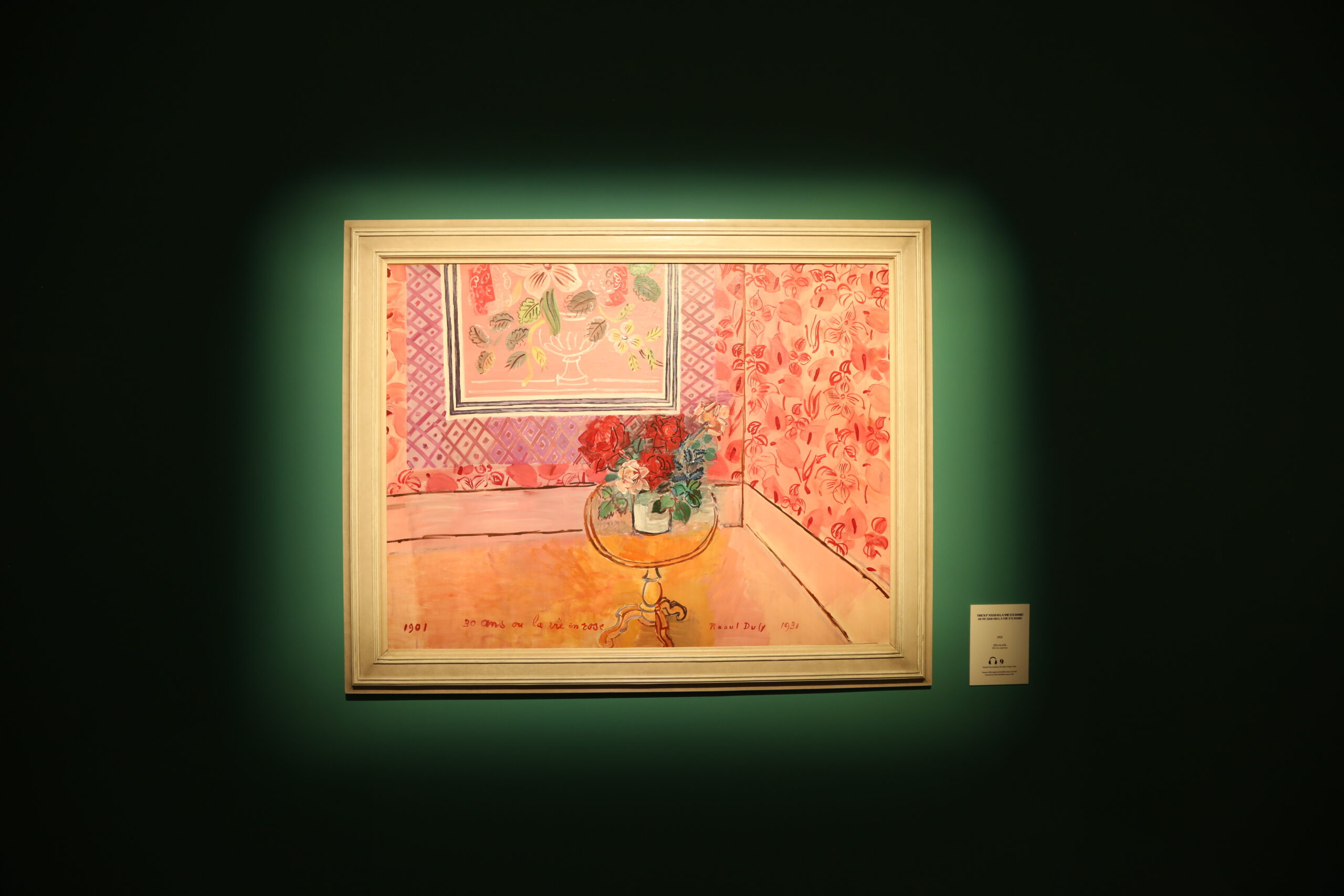From October 14th 2022 to February 26th 2023, the rooms of Palazzo Cipolla hosted the first major exhibition ever held in Italy dedicated to one of the masters of Modern Art: Raoul Dufy (Le Havre, June 3rd 1877 - Forcalquier, 23 March 23rd 1953). With over 160 works, including paintings, drawings, ceramics, and fabrics from renowned French public and private collections – such as the Musée d’Art Moderne de Paris (that conserves one of Dufy’s richest collections), the Centre Pompidou, the Palais Galliera, the Bibliothèque Forney, and the Bibliothèque littéraire Jacques Doucet, all in Paris, along with the Musée de la Loire, Musée des Tissus et des Arts Décoratifs in Lyon, the Musée des Beaux-Arts Jules Chéret in Nice, and the Musée Royaux des Beaux-Arts de Belgique in Brussels – the Raoul Dufy. Il pittore della gioia exhibition narrates the story of the life and works of an artist that has always looked towards modernity, pervaded by a liveliness he was able to adapt to all the decorative arts, contributing to a change in the preferences of his audience. The artis grew up in a family who lived in modest economic conditions. His father was an organist who transferred to Raoul, in particular, the same passion he had for music, which he cultivated for the rest of his life, transposing it also to his works.
The exhibition was promoted by the Fondazione Terzo Pilastro - Internazionale through its President, Prof. Emmanuele F. M. Emanuele, was created by Poema, with the organizational support of Comediarting and Arthemisia, and was conceived by the Musée d’Art Moderne de la Ville de Paris, Paris Musées. The catalogue was published by Skira.
Curated by Chief Curator Sophie Krebs and Nadia Chalbi, head of the Musée d’Art Moderne de Paris exhibitions and collections, Dufy’s exhibition is an emotional journey through the themes the artist favored most, where visual sensations are reduced to their essence of reality, with the use of composition, light, and color which are the emblematic elements that characterize his art.
Dufy was a great French painter, set designer, and draughtsman from the beginning of the 20th century, as well as the creator of monumental works, such as La Fée Electricité (The Electricity Fairy, 1937 - 1938, Musée d’Art Moderne de Paris), which is one of the largest paintings in the world, measuring a total of 6 meters and consisting of 250 panels, commissioned by the Compagnie Parisienne de Distribution d’Électricité and exhibited in the Electricity Pavilion at the 1937 International Expo in Paris. With his ability to capture moods, colors and the intensity of light, and then transfer them to his canvases, Dufy became ? the painter of joy and light par excellence.
In 1891, after a family financial crisis, young Raoul was forced to look for work in Le
Havre
In Paris' extraordinarily stimulating artistic environment, he was influenced by two masters of Impressionism: Monet and Pissarro. However, in 1905, through the scandal caused by Fauvism, he discovered a modern style of painting that was popular at the time and that led him to approach Matisse.
1903 was his first time at the Salon des Indépendants (where he exhibited until 1936), and he was also then accepted in 1906 at the Salon d’Automne (until 1943).
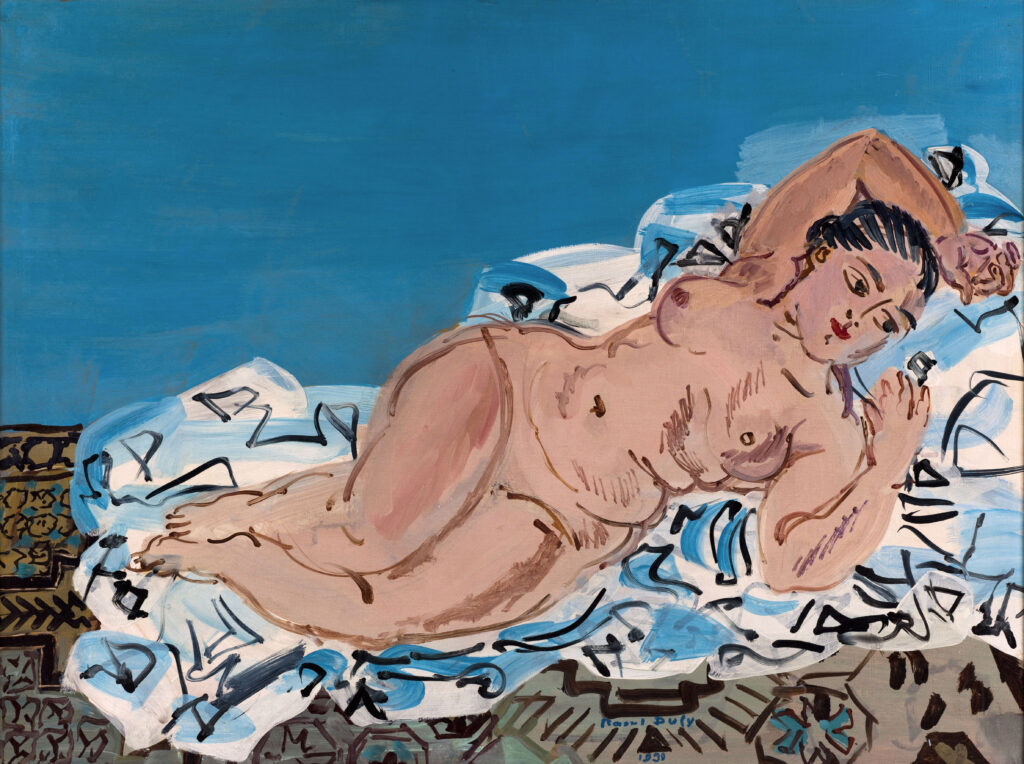
Dufy continued painting, uninterrupted. Then, starting in 1910, he expanded his activity to the field of decorative arts, successfully establishing himself in a rather vast field of production: from engraving to painting and graphics, from ceramics to fabrics, from illustrations to set design. With artistic projects that knew no interruption until his death, all this allowed him to create his dazzling palette, onto which he overlaid his vibrant and allusive graphic touch.
Divided into 13 sections, the exhibition narrated the French painter’s entire artistic career, through multiple works that embrace different techniques from the various decades of the 20th century, up until the 1950s, when Dufy sought new themes due to the war and an illness that forced him to remain in his workshop in the south of France.
Dufy preferred maritime landscapes and particularly loved the racetracks, which ended up being successful for him. Sensitive to the air of his time, he became interested in the entertainment society, with his races, regattas, elite and popular shows that he lively and vivaciously reproduced.
He was an artist who constantly sought stimuli and experimentation, capable of creating art that was both demanding and apparently light, with a stated purpose: that of bringing joy and pleasure, as American writer Gertrude Stein once wrote.
With regard to the exhibition, Prof. Emmanuele F. M. Emanuele, President of the Fondazione Terzo Pilastro - Internazionale stated: “I am very pleased to host an exhibition on Raoul Dufy in the exhibition space of Palazzo Cipolla, which is presented again in Rome after almost forty years of oblivion.” (ed. The first and only exhibition on Dufy in the capital, before today, was in fact held in 1984 at Villa Medici.) “Often not entirely understood – due to the apparent simplicity of his artistic style, for which he was frequently described as being superficial and frivolous – Raoul Dufy’s preparation was actually articulate and complex. He was initially influenced by Impressionism, masterfully perpetuating the tradition of Monet and counting on his peculiarity of being a ‘colorist by temperament’. He later approached Fauvism, inspired by Matisse, Braque, and Cézanne. As he matured artistically, Dufy’s singularity was found in gradually dissociating colors from the drawing, simplifying as much as possible and, therefore, favoring form to content. Following his own theory that color was used by painters to capture light, he travelled extensively through the Mediterranean, especially in Provence (ed. where he then settled) and Southern Italy. This is where he created his famous landscapes, bathers, and wheat fields, then concert halls, and especially regattas, horse races and racetracks, depicting the society of leisure of the 1920s and 1930s, which made him popular with the public.”
Exhibition details:
- VENUE Rome, Palazzo Cipolla, Via del Corso 320.
- DATES October 14th 2022 to February 26th 2023
- PROMOTING INSTITUTION Fondazione Terzo Pilastro - Internazionale
- ORGANISING INSTITUTION Poema Spa
- WITH THE SUPPORT OF Comediarting e Arthemisia
- OPENING HOURS
Tuesdays to Sundays 10:00 > 20:00 hrs
(Ticket Office closes one hour before, at 19:00)
Closed on Mondays
- TICKETS
Full price: €10.00
Reduced price: €8.00 - valid for ages up 26 years, adults over 65 years, law enforcement and military with ID, university students with student ID, journalists with Press Card, holders of affiliate cards (LUISS, Fai).
Free admission: valid for children under 6 years of age, disabled visitors plus 1 chaperone, 1 chaperone for each group booked, ICOM members, tour guides with license (only one admission allowed).
“Open” tickets for the Dufy exhibition can be purchased on ticket.it or at the exhibition ticket counter for €13.50 each.
“Open” tickets are valid for any date and time, from the day after purchase until the end of the exhibition.
HOLIDAYS AND SPECIAL OPENINGS
Monday, 31 October 31st 10 am to 8 pm
Tuesday, November 1st 10 am to 8 pm
Thursday, December 8th 10 am to 8 pm
Saturday, December 24th 10 am to 3 pm
Monday, December 26th 10 am to 8 pm
Saturday, December 31st 10 am to 3 pm
Sunday, January 1st 3 pm to 8 pm
Friday, January 6th 10 am to 8 pm
- SALES CHANNELS
Ticket counter: YES Online: YES (Ticket.it, Ticketone Tiqets)
- INFO
Answering machine: +39 06 9837051 biglietteriapalazzocipolla@gmail.com

